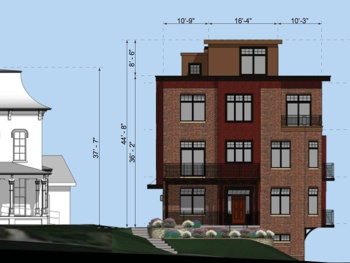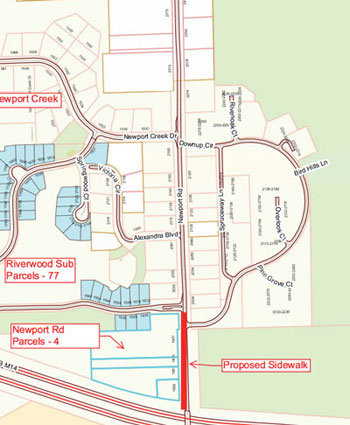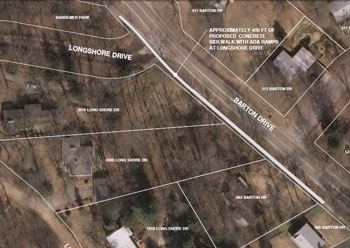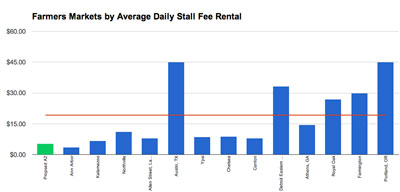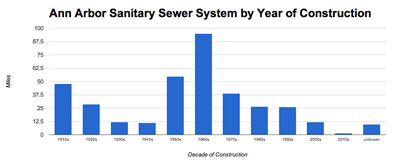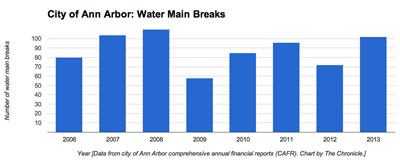Funding allocations to nonprofits have been approved by the city of Ann Arbor for the 2015 fiscal year. The roughly $1.2 million in general fund money was allocated as part of a coordinated funding approach for human services, in partnership with several other local funders.
The city is one of the original five partners in the coordinated funding approach. Other partners include Washtenaw County, United Way of Washtenaw County, Washtenaw Urban County, and the Ann Arbor Area Community Foundation. It began as a pilot program in 2010.
City council action came at its May 19, 2014 meeting.
This year, 105 applications were submitted by 50 local organizations totaling $8,732,389 in requested funding, according to a staff memo. A review committee recommended that 57 programs receive a total of $4,321,494 in available funding. Of that amount, the city is providing $1,244,629.
FY 15 Funding Source
$1,244,629 City of Ann Arbor General Fund
$1,760,708 United Way of Washtenaw County
$1,015,000 Washtenaw County's General Fund
$ 274,907 Washtenaw Urban County CDBG funds
$ 26,250 Ann Arbor Area Community Foundation senior funds
==========
$4,321,494 TOTAL
-
The coordinated funding process has three parts: planning/coordination, program operations, and capacity-building. The approach targets six priority areas, and identifies lead agencies for each area: (1) housing and homelessness – Washtenaw Housing Alliance; (2) aging – Blueprint for Aging; (3) school-aged youth – Washtenaw Alliance for Children and Youth; (4) children birth to six – Success by Six; (5) health – Washtenaw Health Plan; and (6) hunger relief – Food Gatherers.
In 2012, TCC Group – a consulting firm based in Philadelphia – was hired to evaluate the process. As a result of that review, several changes were recommended and later authorized by the city council at its Nov. 7, 2013 and by the Washtenaw County board on Nov. 6, 2013. One of those changes is that funding would not necessarily be allocated to the six priority areas based on the proportion of funding allocated in the past. Instead, allocations among the six priority areas would be based on identified community-level outcomes, the strategies that align with them, and how each are prioritized. An additional change would broaden the pre-screening process so that smaller nonprofits could be accommodated.
Funding for this cycle will start on July 1, 2014. In addition, the RNR Foundation – a family foundation that funded TCC Group’s evaluation of the coordinated funding approach – will now be an additional funder in this process.
The RNR Foundation funding will go toward the planning/coordination and capacity building components of the effort, so their funding is not listed among the items in the program operating component.
Here’s a breakdown of how the program operating component of the city of Ann Arbor’s share will be allocated:
FY 2015 Agency
$20,000 Barrier Busters
$30,000 Peace Neighborhood Center
$35,069 Ozone House Inc.
$54,168 Domestic Violence Project Inc. dba SafeHouse Center
$56,396 UM Regents (Community Dental Center, Housing Bureau for Seniors)
$85,500 Avalon Housing
$90,786 Child Care Network
$102,156 Food Gatherers
$115,558 The Salvation Army of Washtenaw County
$122,095 Washtenaw Community Health Organization
$160,761 Shelter Association of Washtenaw County
$164,660 Community Action Network
$207,480 Legal Services of South Central Michigan
$1,244,629 Grand Total
-
That compares with the current fiscal year as follows:
FY 2014 Agency
$4,561 HIV/AIDS Resource Center
$12,772 Washtenaw Association for Community Advocacy
$14,282 Planned Parenthood Mid and South Michigan
$17,139 Jewish Family Services of Washtenaw County
$19,835 Barrier Busters
$23,719 UM Regents - Ann Arbor Meals on Wheels
$27,369 The Women's Center of Southeastern Michigan
$63,419 Home of New Vision
$91,645 Interfaith Hospitality Network of Washtenaw County
$94,490 Catholic Social Services of Washtenaw
$95,171 Food Gatherers
$104,944 Community Action Network
$109,851 Perry Nursery School of Ann Arbor
$142,851 Avalon Housing Inc.
$177,052 Services of South Central Michigan
$245,529 Shelter Association of Washtenaw County
$1,244,629 Grand Total
-
The coordinated funding approach sometimes results in the same programs being funded – but by different funders. This year, the city of Ann Arbor is funding a program for Peace Neighborhood Center; last year Washtenaw County provided funding ($19,995) for Peace Neighborhood Center. And last year, the city of Ann Arbor funded a University of Michigan meals-on-wheels program; this year, United Way is funding that program.
Recipients of funds in one year are not guaranteed funding the following year. An example of that is the Women’s Center of Southeastern Michigan, which received $27,369 from the city of Ann Arbor last year for a mental health program, but is not receiving funds as part of the coordinated funding program this year.
This brief was filed from the city council’s chambers on the second floor of city hall, located at 301 E. Huron.




